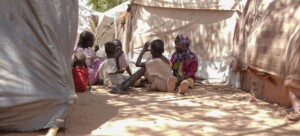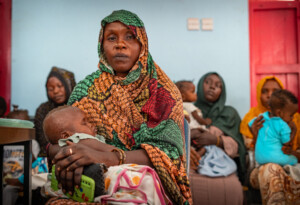Livestock deaths prompt fear of Rift Valley fever and chikungunya outbreak in northern Sudan
Doctors in Sudan’s Northern State have reported 27 deaths and 68 miscarriages among livestock in the area of El Nafaab in Merowe locality, and warn of the emergence of cases of Rift Valley fever and chikungunya, similar to last year. They have appealed to the Ministry of Health and the state government to deal with the potential epidemic in a safe manner.
 Aedes aegypti, the mosquito responsible for the spread of chikungunya (Photo: vectorbase.org)
Aedes aegypti, the mosquito responsible for the spread of chikungunya (Photo: vectorbase.org)
Doctors in Sudan’s Northern State have reported 27 deaths and 68 miscarriages among livestock in the area of El Nafaab in Merowe locality, and warn of the emergence of cases of Rift Valley fever* and chikungunya**, similar to last year. They have appealed to the Ministry of Health and the state government to deal with the potential epidemic in a safe manner.
In a press statement on Sunday, the Socialist Doctors Association reported that a resident of the state arrived at Meroe General Hospital suffering from fever and low blood platelets. The Association noted that in October last year, Merowe locality recorded 4,578 miscarriages and an unspecified number of deaths among livestock.
The Ministry of Health collected 40 samples last month, but the results have not been announced yet. According to the report of the Ministry of Health, the number of deaths last year reached 45 cases, however other reports say that the number of deaths exceeded 189 cases, in addition to complications from the nervous system and blindness.
The Association called on the resistance committees and professional bodies “to put pressure on the state government and the transitional authority so that samples are taken and the results announced in all transparency and that all preventive and curative interventions are taken”.
In the past, ‘fevers accompanied by bleeding’ turned out to be chikungunya. In 2018, dozens of people died in Kassala as a result of chikungunya infections. Last year, 41 cases of chikungunya were also reported in West Darfur.
*Rift Valley Fever – Key facts (source: WHO):
- Rift Valley fever (RVF) is a viral zoonosis that primarily affects animals but can also infect humans.
- The majority of human infections result from contact with the blood or organs of infected animals.
- Human infections have also resulted from the bites of infected mosquitoes.
- To date, no human-to-human transmission of RVF virus has been documented.
- The incubation period (the interval from infection to onset of symptoms) for RVF varies from 2 to 6 days.
- Outbreaks of RVF in animals can be prevented by a sustained programme of animal vaccination.
** Chikungunya is a mosquito-borne viral disease first described during an outbreak in southern Tanzania in 1952. It is an RNA virus that belongs to the alphavirus genus of the family Togaviridae. The name “chikungunya” derives from a word in the Kimakonde language, meaning “to become contorted”, and describes the stooped appearance of sufferers with joint pain (arthralgia).
Chikungunya key facts (source: WHO):
- Chikungunya is a viral disease transmitted to humans by infected mosquitoes. It causes fever and severe joint pain. Other symptoms include muscle pain, headache, nausea, fatigue and rash.
- Joint pain is often debilitating and can vary in duration.
- The disease shares some clinical signs with dengue and zika, and can be misdiagnosed in areas where they are common.
- There is no cure for the disease. Treatment is focused on relieving the symptoms.
- The proximity of mosquito breeding sites to human habitation is a significant risk factor for chikungunya.
- The disease mostly occurs in Africa, Asia and the Indian subcontinent. However a major outbreak in 2015 affected several countries of the Region of the Americas.











 and then
and then